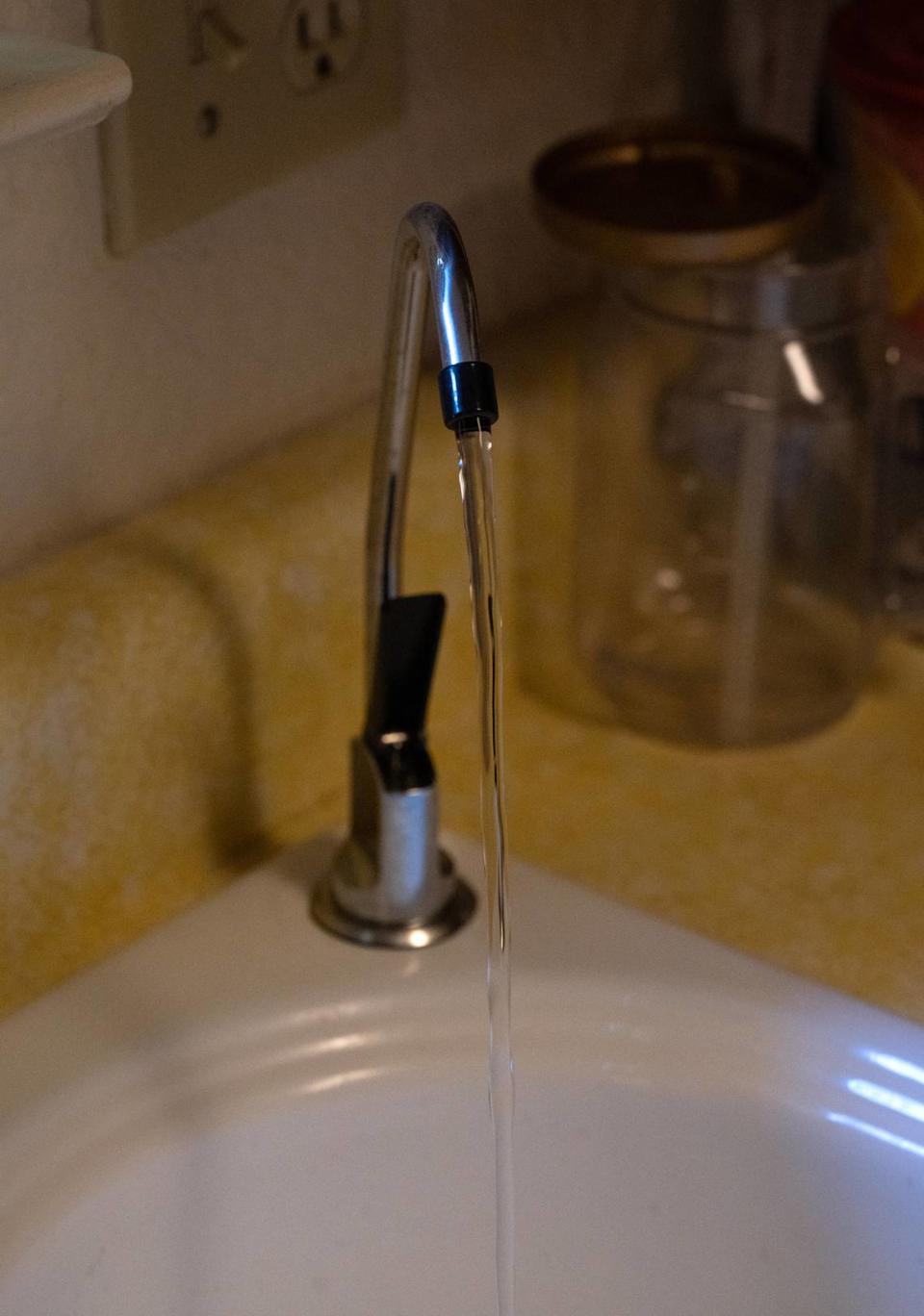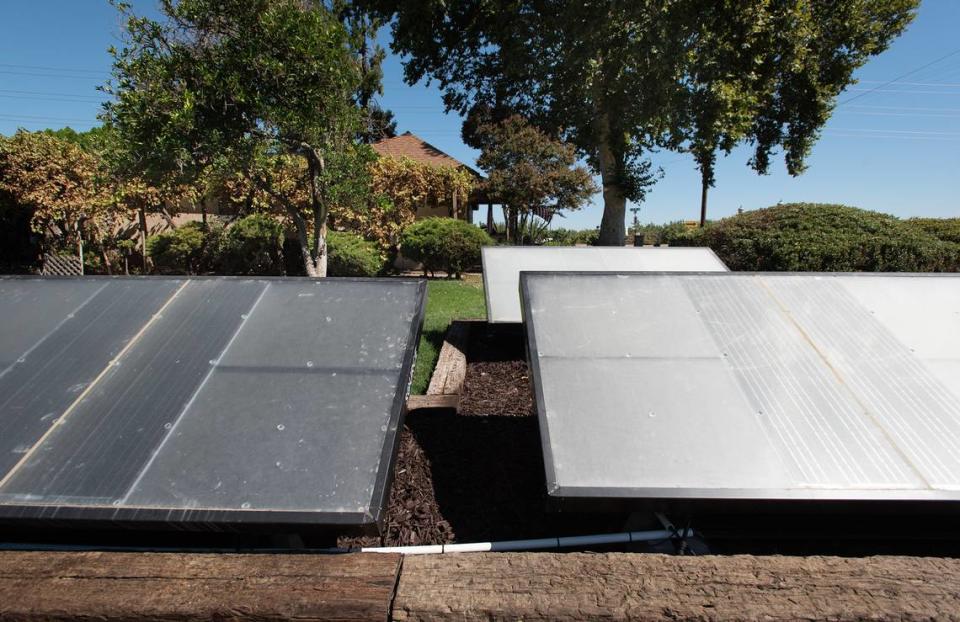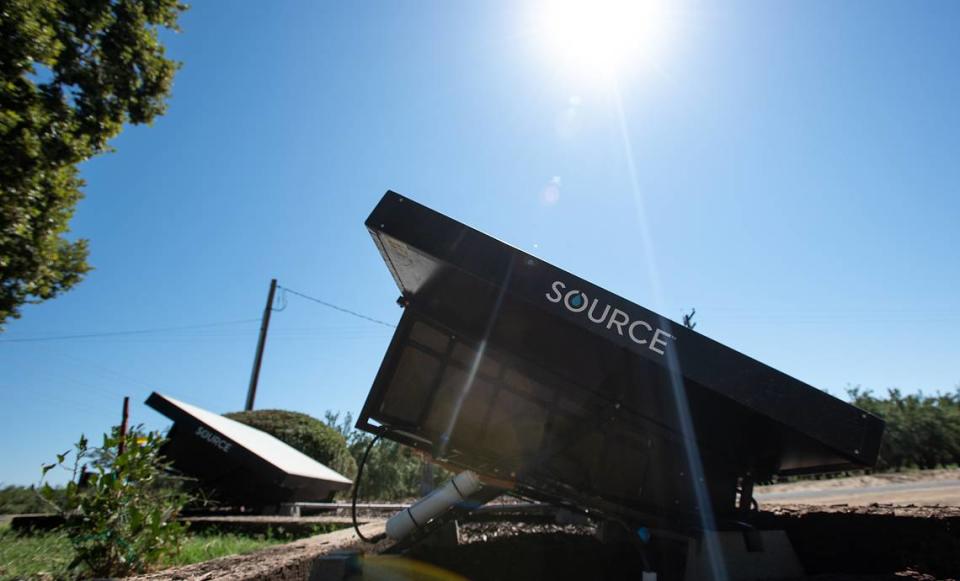Family near Keyes creates its drinking water out of thin air. It’s science, not magic
The drinking water for a family near Keyes comes from an unusual source: It’s extracted from air.
Such systems could help parts of the Central Valley with polluted wells, and parts of the world where water is always in short supply.
The idea is being tested by the Valley Water Collaborative, which has delivered free bottled supplies since last year in parts of Stanislaus and Merced counties.
The test system was installed in May outside the Esmar Road home of Martha Lorenzo and her extended family. Their tap water had come from a well tainted by nitrate before the collaborative stepped in.
“My grandchildren live with me, so we wanted to make sure they have healthy water going forward,” Lorenzo said during a Wednesday morning visit from The Modesto Bee.
Their system yields about nine to 15 quarts a day, enough for the drinking and cooking needs of a typical household.
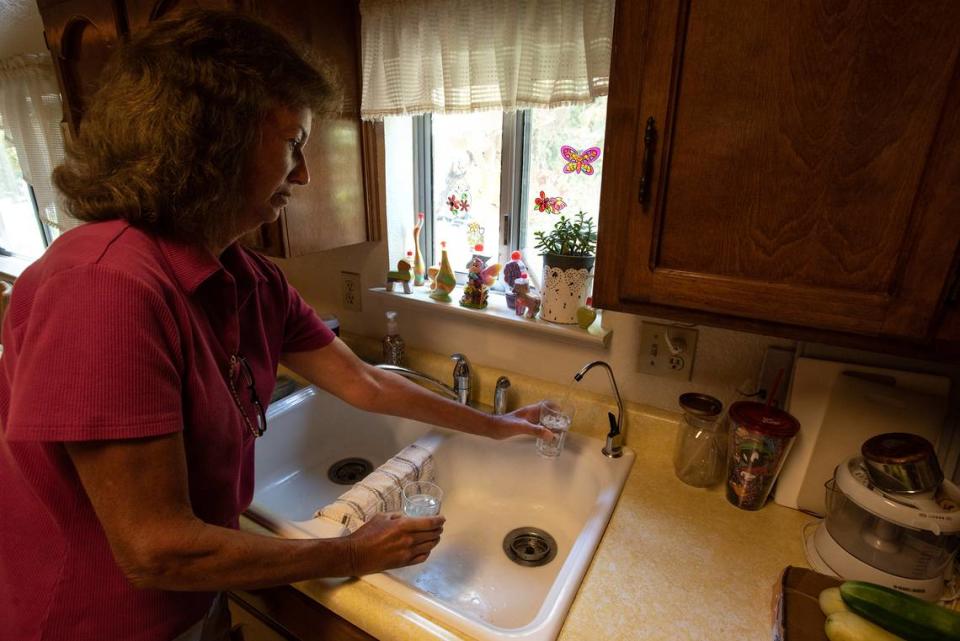
Cheaper than bottled water
The collaborative obtained its unit from Source Global, based in Scottsdale, Arizona. It is one of several companies in the emerging field of airborne water. The brand name is Hydropanel.
A system like the Lorenzo family’s costs about $7,000 to $8,000 but will pay for itself over its 15-year life, said Colin Goddard, vice president for business development in North America. That works out to about $1.30 to $1.45 per day.
“It’s cheaper than plastic bottled water that you buy at a store or have delivered,” said Goddard, who called in Wednesday from the Washington, D.C., area.
The collaborative provides its free water in a zone bounded by the Stanislaus River on the north, the San Joaquin River on the west, the Merced River on the south, and roughly the Tuolumne County line on the east. The program is not for customers of public water systems, which already treat for pollutants.
The effort started with nitrate, which can cause various ailments if ingested. It is funded by about $1 million a year in assessments on farming and other industries whose past handling of manure and fertilizer contributed to the problem.
A domestic well user can ask for a free test to see if it is polluted. Qualifying homes can choose between delivery of water jugs or an under-the-sink treatment system that needs regular maintenance.
Both options work in the short-term but are not permanent solutions, said Parry Klassen, the collaborative’s executive director. He was on hand at the Lorenzo home to explain the water-from-air system, which could spread to others if it proves its worth.
Earlier this year, a $5.5 million state grant allowed the collaborative to expand to 11 other pollutants. They are not eligible for the Hydropanel system yet, Klassen said.
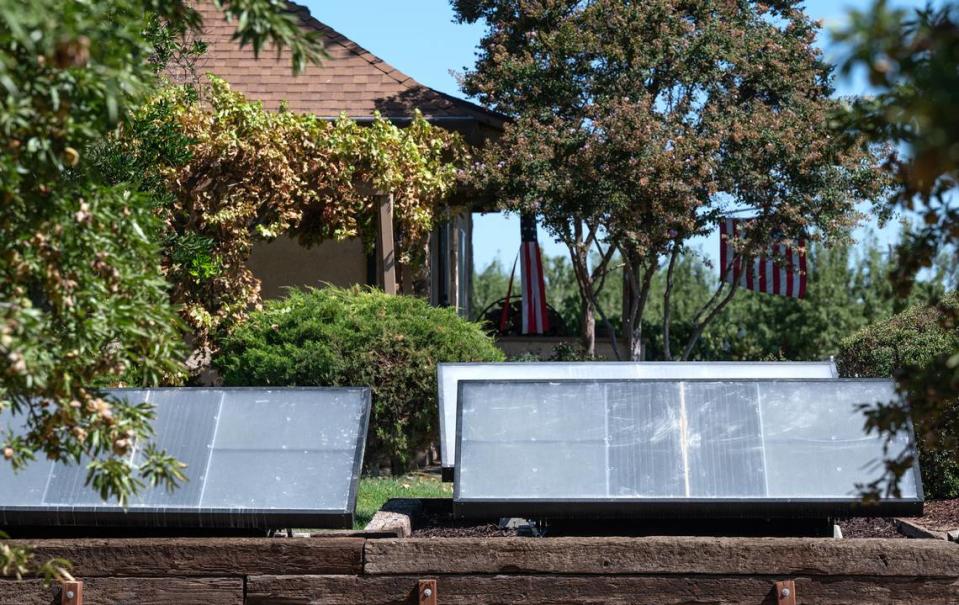
Sunlight drives the process
Air always holds water — lots of it on rainy or foggy days and much less in the Valley’s summer heat. Source Global’s system is designed to work in a range of conditions.
The devices actually are solar panels but with small openings where air is sucked inside. The sun warms the air as it passes through a membrane that extracts moisture. Trace minerals are added to give the drinking water its familiar flavor and the micronutrients lacking in pure H20.
The condensed water is then piped into the house, supplying a kitchen tap separate from the one for dish washing and other non-consumptive uses.
The Hydropanel operates entirely on solar energy, including photovoltaic cells that power the fans inside. It stores excess electricity in a battery so it can produce water at night.
Source has installed systems in more than 50 countries with varying climates. They can be scaled up for schools, hospitals and other large users.
“This isn’t going to save the world, by any means,” Goddard said, “but if it helps make sure that people get clean drinking water from a tap inside their house ... then I think that’s a material benefit.”
